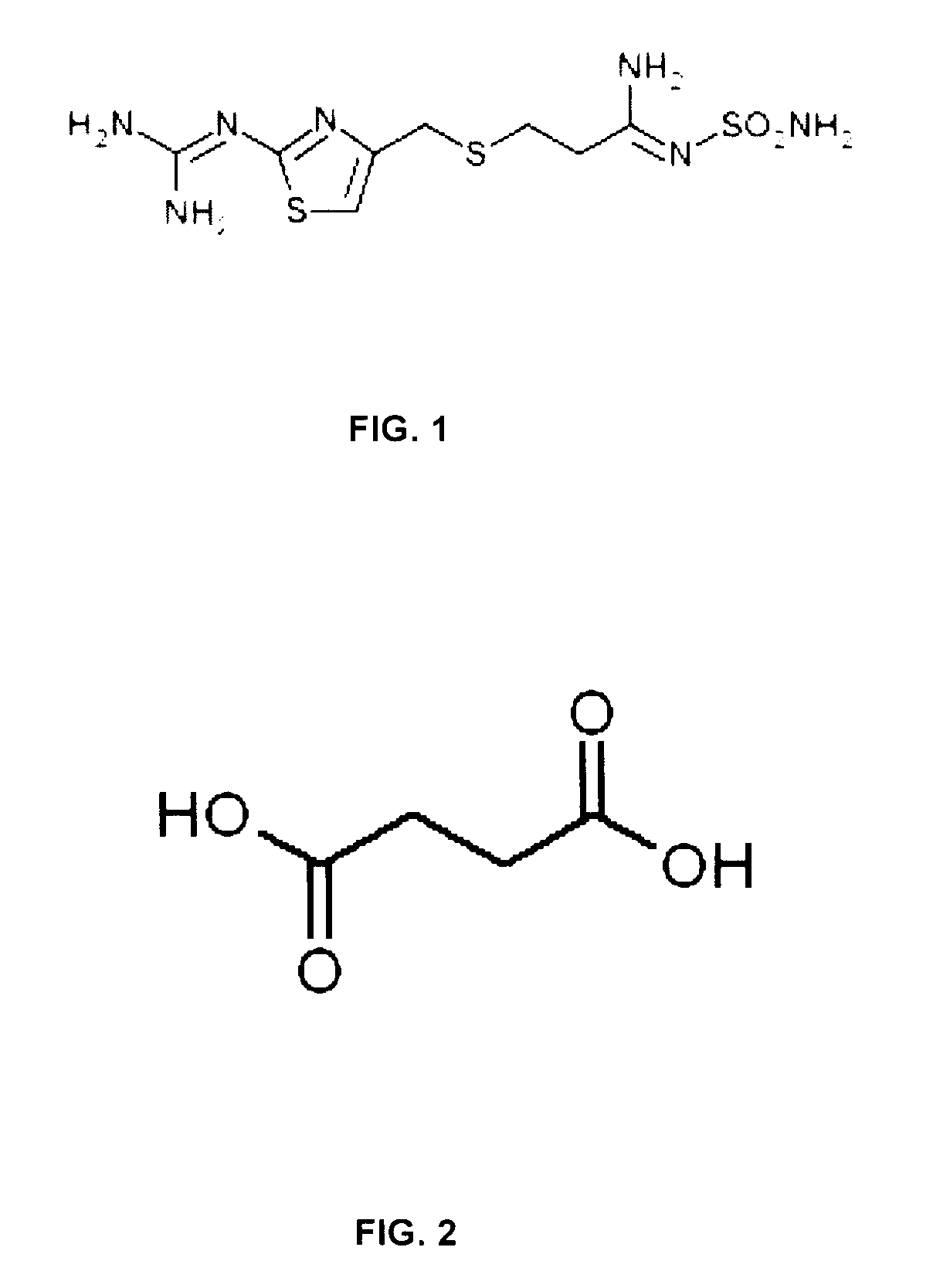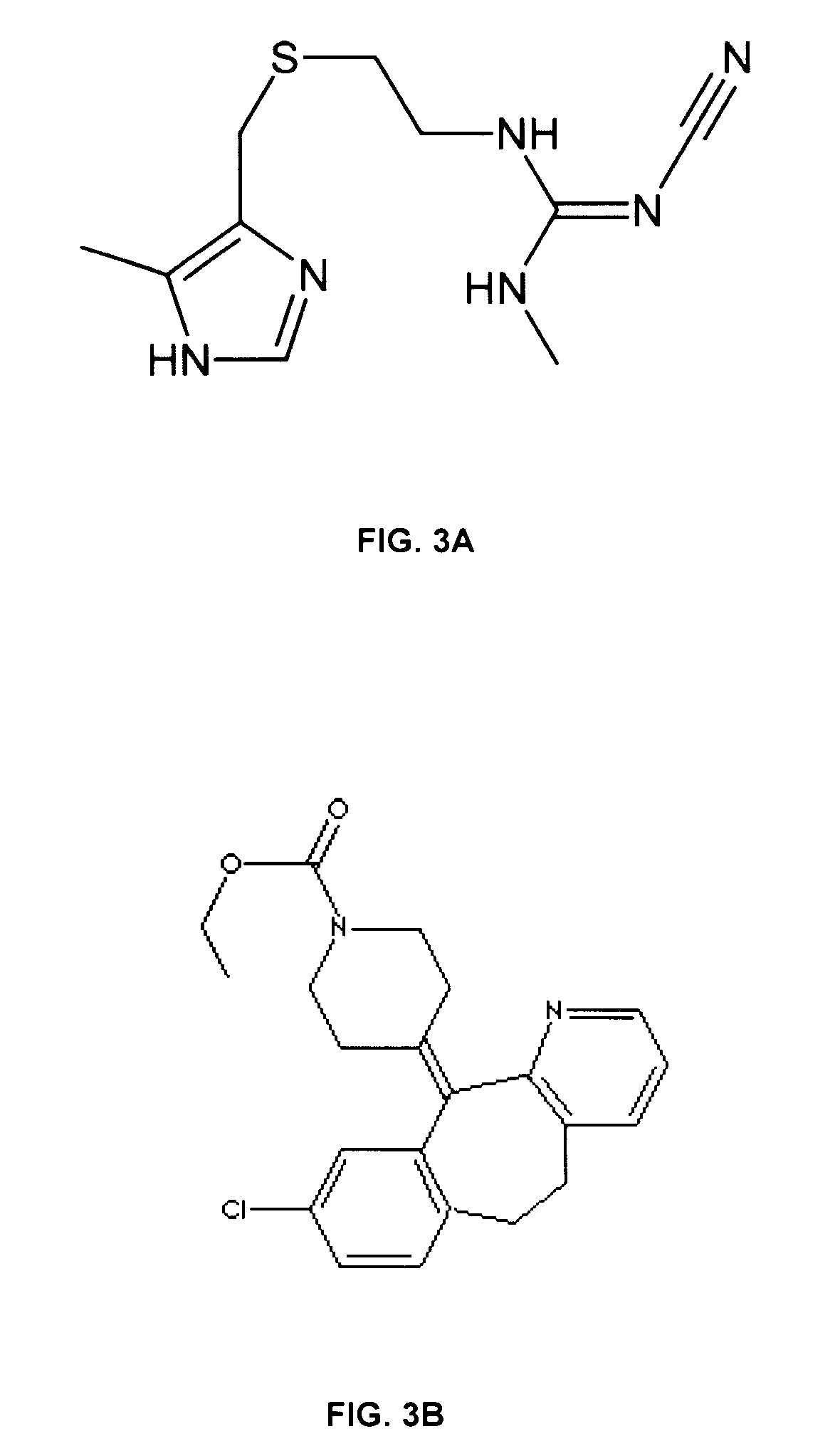Treatment and prevention of deleterious effects associated with alcohol consumption
a technology of alcohol consumption and deleterious effects, applied in the direction of biocide, nervous disorder, drug composition, etc., can solve the problems of reducing the appearance of symptoms, reducing the effect of treatment, and reducing the effects of proposed treatments, so as to and prevent or reduce alcohol-induced flush reaction and hangover
- Summary
- Abstract
- Description
- Claims
- Application Information
AI Technical Summary
Benefits of technology
Problems solved by technology
Method used
Image
Examples
example 1
Prevention of Alcohol-Induced Flush Reaction in Subjects Treated with Famotidine
[0025]The following examples demonstrate the prevention or reduction of symptoms associated with alcohol-induced flush reaction. As control, each subject was tested without treatment. As a second control, each subject was treated with either loratidine (an H1 antagonist) or cimetidine (an H2 antagonist). Cimetidine is shown as FIG. 3A and loratidine is shown as FIG. 3B. Each subject was also treated with famotidine in a subsequent study. The results are summarized in tables 1-4 that follow.
Subject 1: Patient LB
[0026]Patient LB is a female, is 27 years old and weighs 115 lbs. She is not taking any medications presently. There is no other medical history of consequence.
[0027]Ms. LB drinks alcohol socially on occasion, usually in the form of Vodka. After imbibing several glasses of Vodka, however, LB consistently finds that she has a flushing of the face and torso. Via her own history and symptoms, Patient ...
example 2
Prevention of Alcohol Flush Reaction and Hangover by Administration of Famotidine and Succinic Acid
[0052]To test whether both alcohol flush reaction and hangover could be prevented four subjects susceptible to both alcohol flush reaction and hangover were given a combination of famotidine and succinic acid prior to imbibing in alcohol. Previous studies with famotidine alone did not appear to significantly reduce or eliminate symptoms associated with hangover. Each subject was given 10 mg famotidine and 200 mg succinic acid prior to imbibing in alcohol. Afterwards each ingested sufficient alcohol that would ordinarily result in both flush reaction and hangover. None of the four tested individuals indicated flush symptoms or symptoms associated with hangover. Thus, the results show the combination of both famotidine and succinic acid prevents alcohol flush reaction and hangover.
PUM
| Property | Measurement | Unit |
|---|---|---|
| time | aaaaa | aaaaa |
| drinking time | aaaaa | aaaaa |
| time | aaaaa | aaaaa |
Abstract
Description
Claims
Application Information
 Login to View More
Login to View More - R&D
- Intellectual Property
- Life Sciences
- Materials
- Tech Scout
- Unparalleled Data Quality
- Higher Quality Content
- 60% Fewer Hallucinations
Browse by: Latest US Patents, China's latest patents, Technical Efficacy Thesaurus, Application Domain, Technology Topic, Popular Technical Reports.
© 2025 PatSnap. All rights reserved.Legal|Privacy policy|Modern Slavery Act Transparency Statement|Sitemap|About US| Contact US: help@patsnap.com



